How do Fender and Gibson scale lengths compare? In our Scale Length Comparison we look at the 4 main differences between these two classic scale lengths.
There are a few debates that have raged throughout the guitar world for generations. Single coils versus humbuckers. Active pickups versus passive pickups. Marshall amps versus Vox amps versus Fender amps. On and on and on. But almost none of them have been quite so hotly debated or have gone on for quite as long as the debate between Gibson guitars and Fender guitars.
Now, there are a ton of differences between these two guitar manufacturers. Everything from the pickups they use, to the wood they’re made with, the construction process—they’re about as different as they could come. But one of the biggest differences—and one of the most observable for you as a player—is the scale lengths that they employ in their guitars (you likely know this, as it’s likely what brought you to this scale length comparison in the first place).
But while you’ve probably heard of scale length or seen it on a spec sheet somewhere, you might not necessarily know what it really means. Not just what it refers to on a guitar, but what it means for you as a guitarist, how it changes the way that a guitar sounds, plays, and feels.
So today we’re going to dive into scale length. We’ll talk about the differences between the most common scale lengths and how those affect your own guitars.
What is the Fender Scale Length?
Believe it or not, Fender has actually used a number of different scale lengths over the course of their history as a company. At the shorter end of the spectrum you have the DuoSonic with a 22 and a half inch scale length, as well as the Jaguar, which uses a 24-inch scale length. And of course some wild baritones and things like that, that have really long scale lengths.
But those exceptions notwithstanding, the most common scale length people are talking about when they’re talking about a “Fender scale length” is a 25 and a half inch scale, like you see on Telecasters and Stratocasters.
What is the Gibson Scale Length?
Likewise, Gibson has used a lot of different scale lengths over their history as well. You have everything from like a 23 and a half inch scale on the Byrdland, up to a 25 and a half inch more “Fender-style” scale on the Les Paul Long Scale.
But, all that notwithstanding, when people are talking about a” Gibson scale length”, what they’re generally talking about is a 24 and three-quarter inch scale length.
One of the least-known facts when it comes to guitar scale length is that the Gibson scale length has actually varied quite a bit over time. It always stays right around 24 and three-quarter inches, but it’s gone anywhere from 24 and five-eighths down to 24 and nine-sixteenths, depending on the era you’re talking about:

But in general, when we’re talking about Gibson’s, we’re referring to a nominal 24 and three-quarter inch scale.
What is Scale Length, Really?
It might seem pretty obvious. When you hear the term “scale length,” you think that it’s the overall length from the nut down to the bridge. And that’s right…sort of.
See, the thing is on almost all guitars you have an adjustable bridge (and even if you don’t have an adjustable bridge, and you have an acoustic or something like that, chances are your bridge is still slanted a bit).
This means that the individual lengths of every individual string on your guitar are a little bit different. Almost like what you see with multi-scale and fanned fret guitars, just in a much subtler way. You have a little bit more length on your lowest string typically, and then each string has progressively less length as you move up towards the highest string This exists mainly so that you can intonate your strings. Every string requires a slightly different length in order to intonate properly.
But if all these individual string lengths are different, which one is it that’s actually giving us our overall scale length? Well, it’s actually none of them (well, it might be one of them depending on how it’s all set up, but in general, it’s not looked at that way).
The way to actually get the scale length of a given guitar is to take a tape measure and measure from the edge of your nut to the 12th fret, then double it. With a Gibson guitar, for example, we will get a measurement of 12 and three-eighths inches. When we double that, we get 24 and three-quarters. Likewise with a typical Fender, we’ll get a measurement of12 inches and three-quarter inches, which we double to get 25 and a half inches.
A Brief Sidenote…
If it seems like a coincidence that your 12th fret is exactly halfway from the nut to the bridge, it’s not. In general, if you take a vibrating string and you keep the tension and all that the same, and you halve its length, it will resonate an octave above where it was before.
So the 12th fret on a guitar is going to be exactly the halfway point between the nut and the bridge, and on guitars that have a 24th fret, it will be halfway between the 12th fret and the bridge.
Difference #1: String Tension
The first big difference between these two scale lengths is string tension. If everything else is equal—you have the exact same gauge of strings, the same brand of strings, and you have your guitar tuned to the exact same notes—if you have a longer scale length, you’re going to have more tension, and if you have a shorter scale length, you’re going to have less tension.
If you’re not super familiar with tension—we talk about it a lot here at Stringjoy—the quick primer is: if you have more tension that generally is going to mean that it’s going to take more force to fret a note or bend a note. So you’re going to have to work a little bit harder to do the same things. Whereas if you have less tension, it’s going to be easier to bend, and easier to fret notes.
Difference #2: Distance Between Frets
The second big difference between Fender and Gibson scale lengths is the distance between each fret on the guitar. Generally speaking, on Fender guitars, there is quite a bit more distance between every individual fret than on an Epiphone or a Gibson style scale length.
Just like we talked about earlier, if you want to play a note that’s an octave higher than your open string, you need to reduce that string’s length by half. As a result, if you have a longer scale length, the length between the 12th fret and the nut is going to be longer and thus, every individual fret in between those is going to be a little bit further apart than it will be on a shorter scale instrument.
Now this really comes down to personal taste…
If you have smaller hands, or you just really like moving really quickly across the fretboard, having a shorter scale length can give you a lot of mobility. You can stretch out a lot further on the fretboard than you could on a longer scale length, and you can slide from note to note with a little bit less movement and a little bit less effort.
Conversely, if you have really big hands, or you just like to be a little bit more precise with hitting your individual notes, having broader or wider distances between your frets gives you more room to work with. This makes it a bit easier to play complex melodies and tight parts without getting your fingers jumbled up with one another.
Difference #3: Action
Believe it or not, scale length also affects your guitar’s action—well, kind of.
So you can set the action to be the exact same on a 25 and a half inch scale as you can on a 24 and three-quarter inch scale—at least in theory. What does change is the range of available actions that you can set your strings at, if that makes any sense.
Basically, when you have a longer scale and you have more tension on a string, that string is going to vibrate a little bit less widely than it would on a shorter scale length. A good way to think of this is if you think of a wave, the distance between the peak and the trough of that wave is known as the amplitude. That range is going to be a little bit tighter when you have a longer scale length and a little bit wider when you have shorter scale lengths.
What that means is that—all things being equal—on a longer scale length, if you have your string a little bit closer to the frets, it might not hit the frets and cause buzzing the way that it will on a shorter scale length.
So if you love really, really low action, going with a longer scale length will actually give you the ability to get even lower to your frets without getting that dreaded fret buzz.
Difference #4: Tonal Characteristics
The fourth and final thing that happens when you adjust scale length like this is that the actual tone of the instrument changes.
The weird thing about this is that it’s really hard to get an apples to apples comparison. Gibsons and Fenders sound way different for a host of reasons that have nothing to do with scale length. But if we try to isolate for that, and look at a bunch of different guitars that have different characteristics and see what kind of groups them all together, what we generally see is that shorter scale lengths have a little bit more of a warm tone, they have a little bit less clear of overtones and can sound almost a little bit muddier to some ears.
Now in a longer Fender-style scale length, generally you get more of a strong, sort of bell-like tone, and you have a little bit of a clearer, tighter bottom end.
Can You Limit the Effects of Scale Length?
So, what do you do if you have guitars featuring each of these different scale lengths, and you want them to play a little bit more evenly, play a little bit more like one another? Well, the best trick that I’ve found is to go about a half gauge different in gauge from one to the other.
So for example, if you have a Les Paul or any sort of Gibson-style scale length, and you have a set of 10s on it, and you absolutely love those, I recommend going with something like a set of 9.5’s on your Strat or your Tele to balance out that tension between the two. Obviously, there’s still going to be some different sonic characteristics present on these different instruments, but this will kind of bridge the gap a little bit.
Which Scale Length is Best?
If you came here hoping I was going to tell you which of the scale lengths we’ve compared here is best, I can’t do that. Both of them are great in different ways, and there have been a lot of awesome players that have used each one of these different scale lengths. Only you can decide which one is right for you.
So I’m curious to hear what your favorite scale length is down in the comments. Do you love just one of these? Do you use both? Do you use something like a 25-inch PRS scale that’s kind of in the middle? Let us know down below. For me personally, I use both—I’ve always found that having a lot of variety in my guitar closet gives me a lot of different paintbrushes to paint with, and that works really well for me.
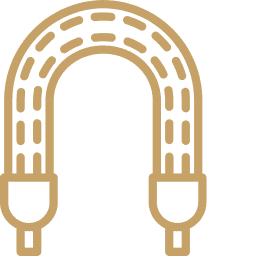
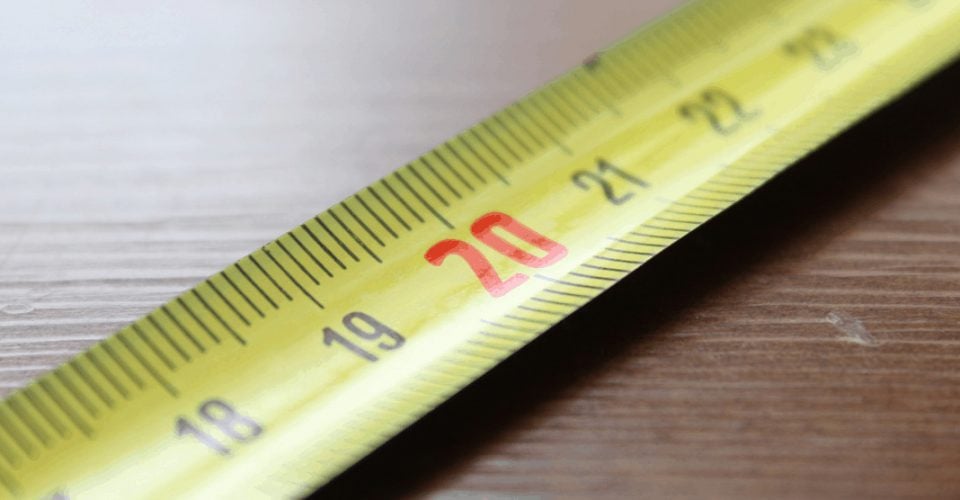
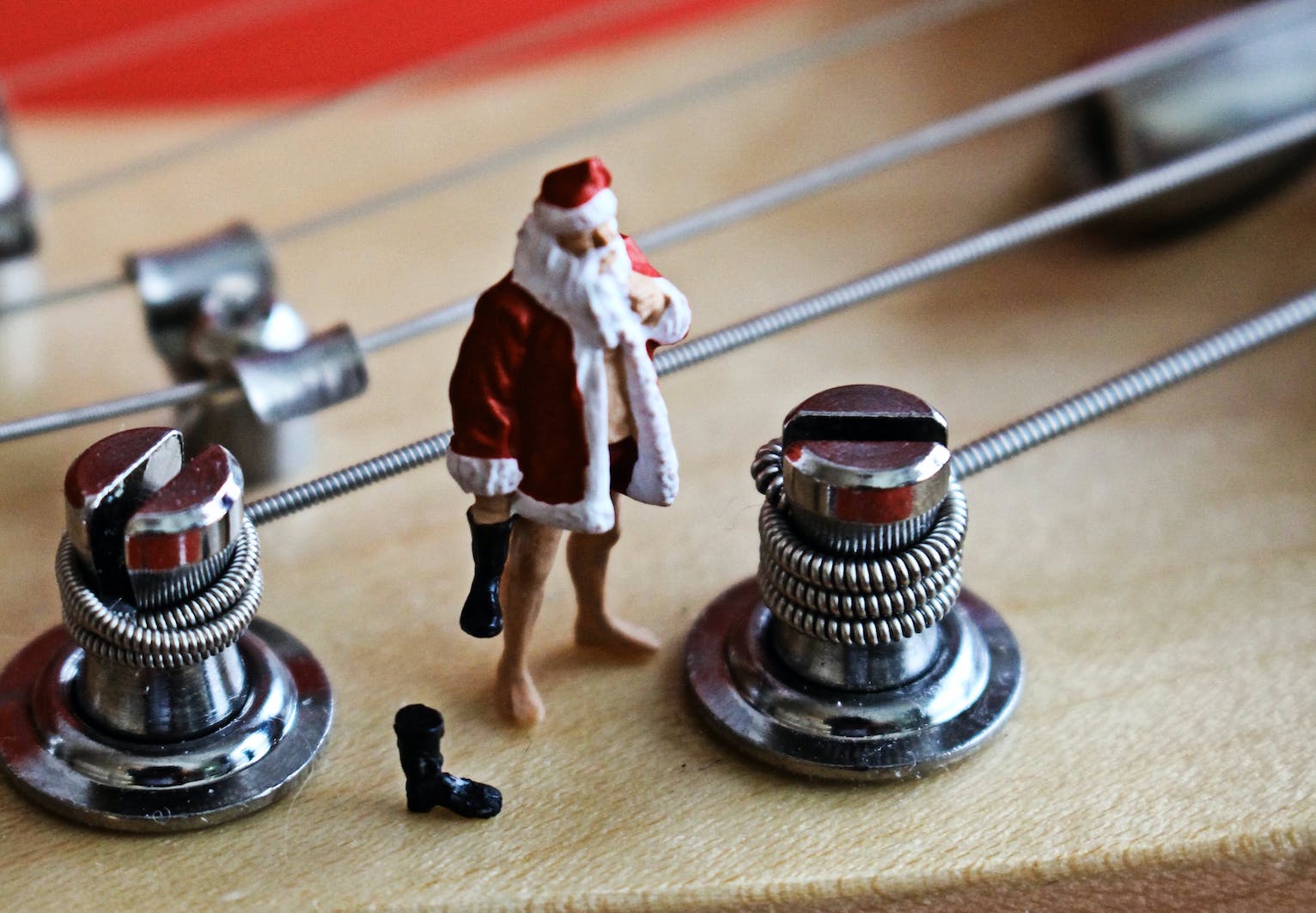
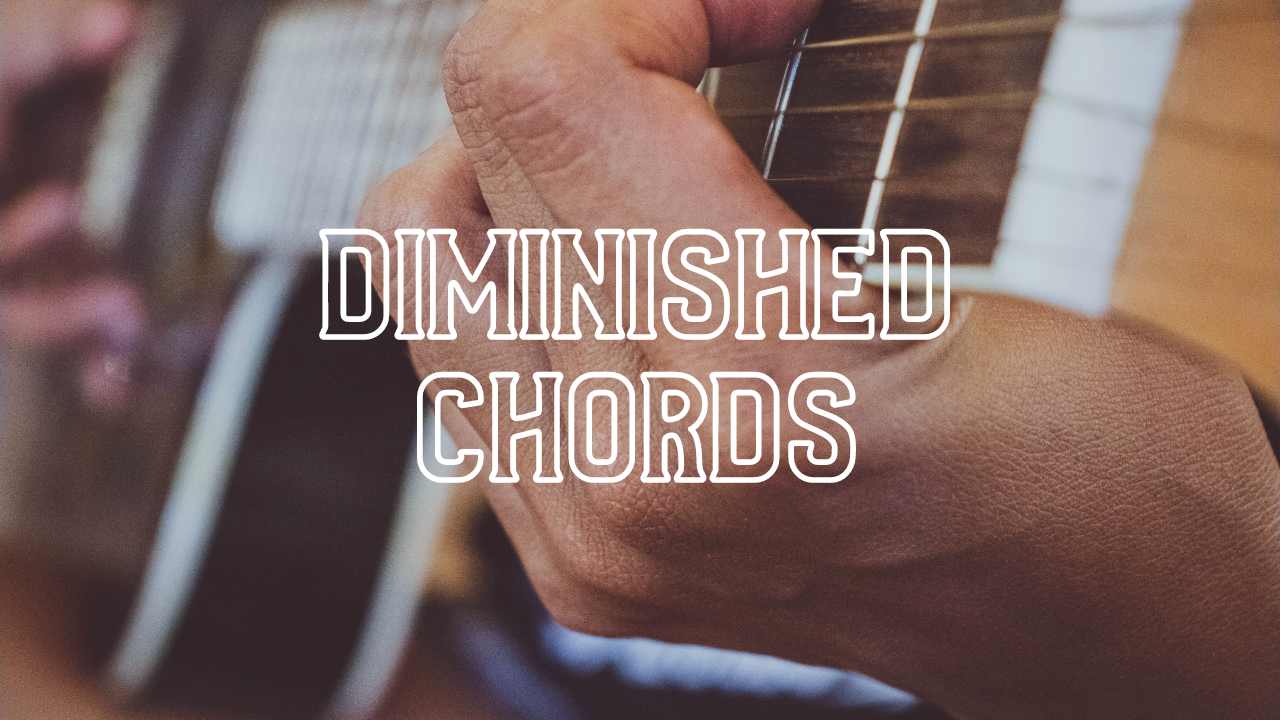
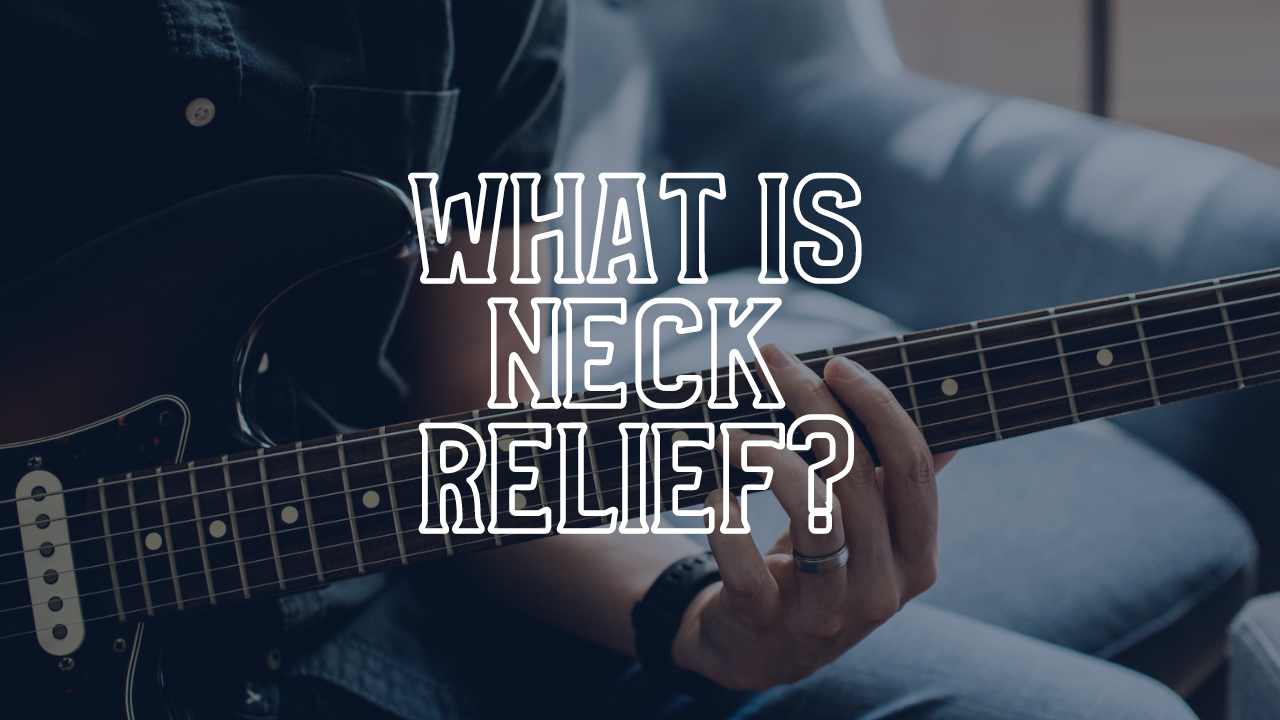
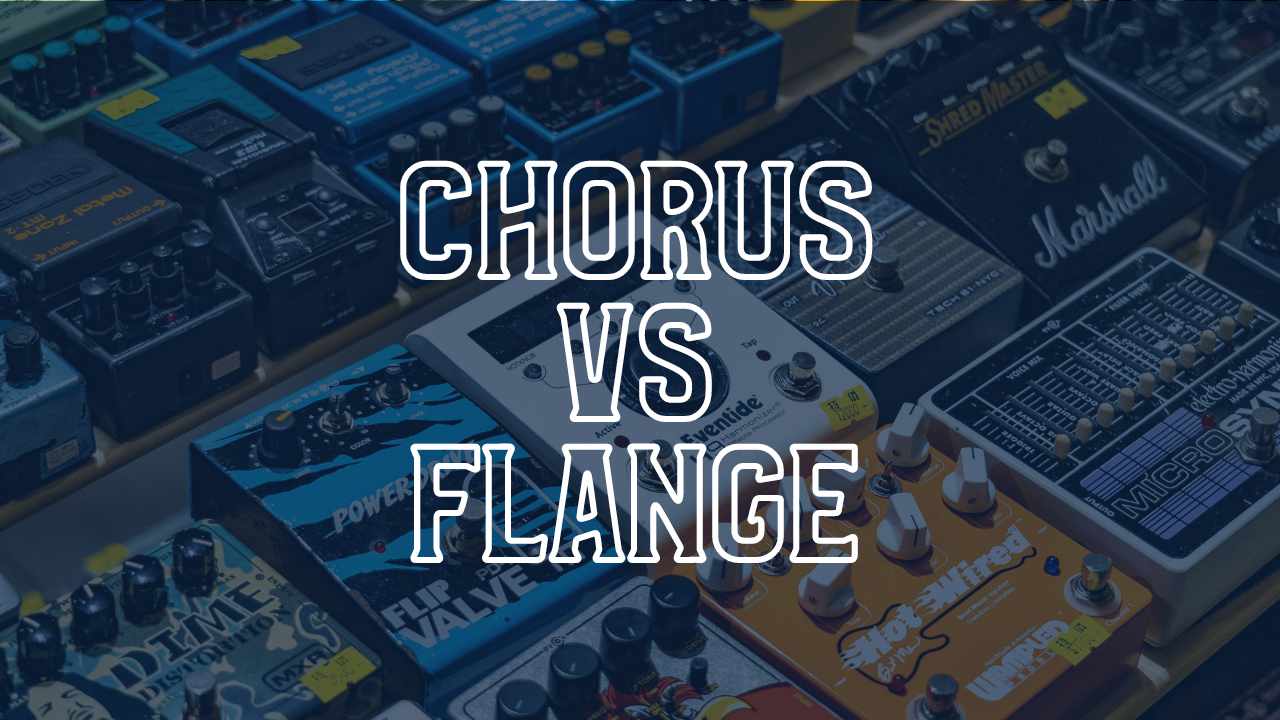


29 Responses
Close…
Scale length is measured on a Gibson and Fender differently.
A Gibson scale is 24 3/4″ “compensated”, meaning the 24 3/4″ measurement is the length after the low E is intonated. Why they do this is absurd from a technical point of view.
A Fender scale length is 25 1/2″ “un-compensated”, so the measurement from nut to the high E bridge saddle will be very close to 25 1/2″ – intonation changes the compensated length of the high E much less than the low E. You can check any Strat or Tele to see this.
The actual uncompensated scale length of a Gibson LP, SG etc. is “technically” 24 5/8″.
A Fender is 25 1/2″.
Doubt me?
Get a Gibson and a Fender and check for yourself. Actually measure from the nut to the middle of the 12th fret and you will see the Gibson length is 12 5/16″, not 12 3/8″. You can use a simple tape measure but start at the 1″ line on the tape to avoid any error from the hook at the end of the tape. You can also use most yard sticks that are not worn out. We’re not looking for accuracy right now of +/- .001″ just close enough to see the point I’m making.
On a Fender the length will be 12 3/4″ from nut to middle of the 12th fret. On a Gibson the length will be 12 5/16″.
How critical is this really?
Not much, unless, you are laying out the fret slots on a new fretboard or locating a bridge, then it is extremely critical, which is how I learned when I made a replacement neck, for the first time, for a Gibson back in the early 80s.
My point of making the effort to explain this is because if you are going to discuss a technical aspect of the guitar I think the “technical” accuracy is important. I believe most guitarists can handle the truth.
Your welcome.
One of my favorite guitar mods to my Squier Affinity Strat was the Monte Allums enut tuning system. Chords sound much more musical now!
Thanks for the info!
I love both Strats and Les Pauls. My jazz guitar is a Joe Pass Epiphone with the 24.something inches (about 24.75″). I also play classical guitar (Spanish guitars are usually 650 mm or about ~25.25 inches). For the middle of the guitar this is great 5th-9th fret.
Some classical and flamenco guitars are actually longer scale (660mm almost 26 inches). I played a flamenco 660mm and it was awesome for chords! But I don’t think I could play a Bach fugue on it without a massage therapist standing by to take care of my hands afterwards haha.
And actually some of the older Spanish guitars (like look at a picture of Sor playing for example) and the parlor guitars from the 19th century are much shorter scale. And of course lutes, too. But classical guitar makers seem to be starting to create more shorter-scale guitars ( mostly 630-640mm). For example, Kenny Hill.
With my hands, first position can be really challenging for tougher pieces. I am actually in the process (today) of finding a shorter length classical guitar, and had just realized that I had been playing a “shorter-length” Epiphone for a long time.
I generally don’t even try playing the lower notes on the jazz guitar (with 13s) since they are so warm/muddy. But for upper voicings, chords and melodies they are great!
I had the chance to play a gold-topped vintage Les Paul for more rock stuff, and I think that would basically be my ideal all-round pop/rock/reggae/etc electric guitar. But I am also still dreaming of an all natural ebony/rosewood custom Strat-style Warmoth, but that probably is a few years off and maybe after the gold top 🙂 haha.
For rock/ska, I had been trying to play Strat-type guitars, but had been breaking lots of strings (to be fair on the jazz box too). Perhaps the shorter-scale length combined with smaller guage strings might help in the future?
In any case, best wishes and thanks for the info!
Extremely informative and well presented. All these years as a sometime hobbyist, I didn’t know much about this at all. Comprehensive in 11+ minutes. THANK YOU. Very clear and precise, one of most useful gear videos have seen. Bravo.
Does a string tee on a Strat style headstock have any effect on string length or tension at the B and high E strings and have any effect upon ease of fretting and bending? How about a reverse Strat style headstock where the high strings are the shorter than those on a standard Strat headstock – would that make bending easier ?
I play an Aria Pro II ZZ. Bought it back in 1984, it has a 25.5 scale length. I have long fingers (5 fret stretch from 1st – 5th). I’ve used every string on the market and last year, I got a set of String Joy 9.5 Husky. That is my stopping point; they beat all other strings I’ve used. For me, they are the best string set for my guitar/scale length.
I’m don’t know what the scale on my 1st two guitars was. I knew nothing about such things then and initially had enough trouble keeping up with E A D G B E. The last 3 electrics I have owned have 24.75″ scale. The first was a blonde Marauder copy made by Aria. I sold it and should not have. My next 2 are Gibson SGs. I have a 1978 Gibson SG Standard that plays better than any other SG I’ve ever played. My last SG was a project guitar. I bought a 2015 Gibson SG Special body with neck and custom built it myself. It is no where near as nice as my 78 but it’s not a bad guitar. As soon as they get one in stock I’ll be getting a Cherry Harley Benton DC Custom from Thomann in Germany. Current estimate is that it will ship in early June. I’ve heard so many great thing about Harley Benton I thought I’d give one a shot and see how it works out. The guitars only $209 but every review I have seen on that model says it is much more than what you would normally get for that amount of money.
I own several guitars of different scale lengths. At the end of the day I will sacrifice pretty much everything to an extent except string tension. I like and prefer light string tension. My favorite scale length is my 25th Anniversary PRS SC245 (24.50), followed by my McCarty Singlecut (24.594) and then Gibson (24.75) and rounding out Fender (25.50) On all but my Fender lengths I use the Balanced .10-.48 strings and on Fender length .9-.42.
I have a number of guitars, including Epiphone and Gibson. I like them very much. have no Fenders. It just happened that way, not a pre determined decision. I watched a show about a virtual star blues convention. They almost all played Fenders. As you suggested, both brands have been played by greats.
Thank you for that great explanation of scale lengths.
I use both. My Zion is a Strat style. Action is a little higher. I use straight 10’s on it. My DeAngelica is a 335 style. Lower action easier to bend. I use 10’s with 52 in bass.
An old injury to my left wrist has limited my mobility in my left hand, so I usually played with a capo to shorten my scale. I recently purchased a Taylor Academy with a 24 and seven eights scale is working out nicely. My next move will be to take off the Elixers and try some Stringjoy extra lights.
Sorry to hear about the injury, but glad to hear it about the strings!
I have a Les Paul, a Super Strat and a Tele and I love all of them!!!
this confirms my long time argument that you can achieve lower actions on extended scale guitars than you can on conventional scale guitars . its about time someone confirmed it for me
Glad we could help!
Love learning about all this, thanks Scott for the Tech Talk!
Glad it was helpful!
I have used mostly Fender 25-1/2″ scale type instruments but last year I purchased a Gold Top “Chibson” Les Paul with soapbars (24-3/4″ scale) that I really like. Gives me a good variety of sounds.
One of the guys in our shop brought one of those Chibsons in a few months ago, obviously not a Gibson, but it was better than I expected!
I have nothing to add except that this was a very good discussion of scale length. What was helpfull to me was the idea of using slightly different gauges on guitars with different scale length to keep the feel consistant. I own both Gibson and Fender and have found it to be true, primarily with the first and third string.
Thanks so much Bob, I appreciate the kind words!
now this is the kind of content i enjoy! as someone who uses extended scales almost exclusively, it was neat to hear about the classic scale lengths. Is there anyway you could do comparisons between Fender’s 25.5″, Schecter’s 26.5″, and Jackson/Ibanez’s 27″? I would be very interested in that.
I’ll add that to my list!
I don’t have a preference for scale length and own guitars with 25.5″, 24.75″, and 25″ scales. For almost 30 years I used 11-50 gauge strings, as anything thinner would result in broken strings and out of tune warbling. In the last 3 years or so I’ve been ok with 10-46 without those issues.
Scott I have them both. Like you I like the variety and think scale length is the smallest difference between Gibson & Fender guitars.
To isolate the effect of scale length on tone you could take two “identical” Strats, with “identical” strings, then capo one the first fret, re-tune it down the half-step, and do a side-by-side.
I prefer a 24 3/4″ scale length because my hands and fingers are less agile than they used to be. I am old and losing some of my fine motor skills, flexibility, and I have pain in my wrists and finger joints. I’m not complaining, just letting you know why I prefer a shorter scale length. Thanks for your video commentaries and for making darn fine strings!
Lol, I am finding the same thing as i grow older, tend to favor my LP. However if i am going to play a lot of rhythm chords the Strat is my favorite.